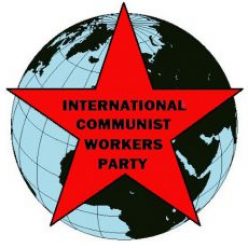
Fascist Kidnappings and Gaza Crisis Show Need for More Clarity on Communist Workers’ Power
This is the first in a series that will summarize historical debates over the nature of workers’ power and the revolutionary practice that spurred them.
USA, November 2— “I’m a socialist,” said a young activist. It was a rare quiet moment at a Community Defense Center in front of a Home Depot. The group tries to help day laborers avoid being kidnapped by ICE (immigration police).
“I’m an anarchist,” responded another.
“And I’m a communist,” an ICWP comrade shared. Addressing the young anarchist, she added, “I think we probably have a lot in common.”
He agreed.
“In the past,” the comrade continued, “communists and anarchists agreed on the need to smash the capitalist state. Not to take it over and reform it, as socialists wanted. Their long-term goals were vague but similar: people working cooperatively and sharing without a money economy. The real disagreement was about socialism. Communists wanted to build a socialist state as a transition to that future. Anarchists didn’t.”
The anarchist nodded.
“But,” said the comrade, “our party broke decisively with the 20th-century communist movement on that point, among others. Socialism never transitioned into communism. It exposed itself as essentially state capitalism. Instead, our work is to mobilize masses for communism now. So that in a revolutionary situation we and they can begin to build communism directly.
“I think,” the comrade continued, “that the main difference now between anarchism and communism as we understand it is whether we need to organize as one international communist workers’ party. Or if autonomous anarchist collectives could make revolution or organize globally after.”
There was a little more to this conversation before the shift coordinator sent everyone to their stations. The comrade promised to share the Red Flag series about the Chinese Cultural Revolution. Her anarchist friend was interested in reading it.
Practice, Theory, Practice
We learned a lot from the experiences of the so-called “ultra-left” in the Chinese Great Proletarian Cultural Revolution of the 1960s. From their breakthroughs, and from their defeat. From the Haitian revolution of 1804. And from the Paris Commune of 1871. From the earliest practice of the working class exercising its own power.
And from mistakes we ourselves made when nationalism or reformism shaped our organizing in factories, fields, and schools. There is more to learn from our own history in the USA, El Salvador, South Africa, and elsewhere. And much to share with younger friends and newer comrades.
We also have more to learn from the contradictions and struggles in the Communist Party of the Soviet Union (CPSU) in its first years of power. As it tried to make sense of its own revolutionary practice and chart a road forward.
As far as we know, no CPSU members in the 1920s developed a line close to ours today. But inner-party debates between 1921-1925 over the nature of the socialist state echo themes we encounter in discussions today. Later articles in this series will look at some of them.
Background: Marx and Engels on Working-Class Power
Like things Marx and Engels wrote, the Communist Manifesto (1848) was grounded in contemporary working-class struggles like Chartism. Regrettably, they knew (or possibly cared) too little about the Haitian revolution to draw lessons from it. The first phase of that revolution ended with a new Haitian capitalist class in power. The second, in 1804, was the world’s first proletarian revolution.
The Manifesto said that “the first step in the revolution by the working class is to raise the proletariat to the position of the ruling class to win the battle of democracy.
“The proletariat will use its political supremacy to wrest, by degree, all capital from the bourgeoisie, to centralize all instruments of production in the hands of the state,” it continued. “I.e., of the proletariat organized as the ruling class.”
A proletarian “state” would end capitalist property relations “by degree.” This was a very general formulation. A study of Haiti, had it been possible then, would have enabled Marx and Engels to be more specific. But it was not until the Paris Commune of 1871 that they could analyze even a brief period of working-class rule.
The next article in this series will explain how the split between anarchists and communists deepened as they drew conflicting lessons from the Paris Commune of 1871.
History of Great Proletarian Cultural Revolution in China here

